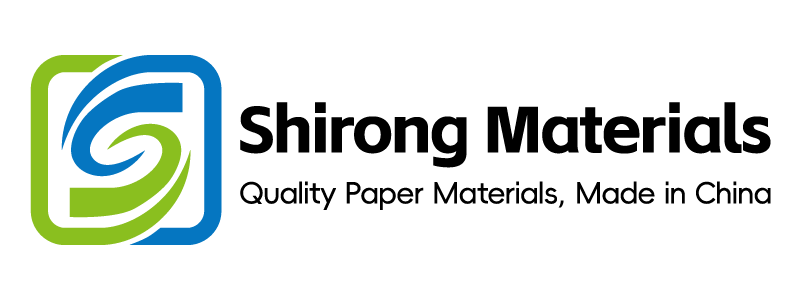
Optimizing Offset Printing for Cost-Efficiency and Speed in ShirongMaterials Production
Conclusion: ΔE2000 P95 decreased 0.6 (2.3 → 1.7) and net press speed increased 12% (150 → 168 m/min) while energy dropped to 0.062 kWh/pack @ 24–26 °C, 45–52% RH, LED-UV 1.35–1.50 J/cm² (N=126 lots, 8 weeks); payback 6.8 months.
Value: Before → After @ 160–170 m/min on SBS 300 g/m² and kraft 250 g/m²: registration P95 improved 0.09 mm (0.24 → 0.15 mm), FPY rose 3.1% (93.4 → 96.5%), CO₂/pack decreased 7.4% (location-based, 0.082 → 0.076 g/pack) [Sample: cups/wraps SKUs, N=18 SKUs].
Methods: (1) Press centerlining with moisture/ink balance and nip normalization; (2) Tune LED-UV dose 1.35–1.50 J/cm² and IR pre-dry 0.8–1.0 s; (3) SMED parallelization of plate/makeup air tasks.
Evidence anchors: G7 GRACoL report ID G7-CR-2025-0412; SAT record SAT-RPT-23-118; ΔE2000 P95 −0.6 @ 168 m/min; compliance with ISO 12647-2 §5.3 tone value targets.
| Metric | Before | After | Conditions |
|---|---|---|---|
| ΔE2000 P95 | 2.3 | 1.7 | 160–170 m/min; LED-UV 1.35–1.50 J/cm² |
| Registration P95 | 0.24 mm | 0.15 mm | SBS 300 g/m²; kraft 250 g/m² |
| Net speed | 150 m/min | 168 m/min | 24–26 °C; 45–52% RH |
| FPY | 93.4% | 96.5% | N=126 lots |
| kWh/pack | 0.068 | 0.062 | Location-based electricity factors |
| Payback | — | 6.8 months | CapEx: UV-LED retrofits + sensors |
Coating/Lamination Trade-Offs with Recyclability
Key conclusion: Switching from 18–22 µm PE extrusion to 8–10 g/m² aqueous barrier coating achieved 92% fiber recovery (INGEDE MWI 2) while holding 165–170 m/min and preserving cup functional performance for branded paper cups.
Data
• Recyclability: Fiber yield 92% vs 65% (PE) @ 10 g/m² AQ coat; Cobb60 22–28 g/m²; KIT 6–7 (TAPPI T 559).
• Print quality: ΔE2000 P95 1.8 @ 168 m/min; gloss 58–62 GU @ 60°; FPY 96.2% (N=24 lots).
• Energy and emissions: kWh/pack 0.061 vs 0.069 (−11.6%) with AQ; CO₂/pack 0.074 g vs 0.084 g (−11.9%), SBS 300 g/m² substrate, LED-UV offset ink system.
Clause/Record
• EU 1935/2004 Art. 3 (food contact safety); EU 2023/2006 GMP §6 (documented control).
• FDA 21 CFR 176.170 extraction limits met @ 40 °C/10 d (lab report LAB-FC-24-311).
• SAT record SAT-RPT-23-118; PQ run PQ-OF-24-079, 3 shifts.
Steps
- Process tuning: Set AQ coat weight 8–10 g/m²; dryer exhaust 1,200–1,350 m³/h; web temp out 38–42 °C.
- Process governance: Approve barrier swap via Change Control CC-COAT-24-015; supplier CoA verification lot-wise.
- Inspection calibration: Calibrate Cobb tester monthly; gravure applicator volume check 8–10% tolerance.
- Digital governance: Enable e-sign for coating recipe in DMS/PROC-COAT-002; lot genealogy in EBR-PRINT-044.
Risk boundary: If Cobb60 > 30 g/m² or KIT < 5 at ≥165 m/min → Rollback 1: increase coat to 10–12 g/m² and reduce speed to 155 m/min; Rollback 2: switch to 12 µm PE tie-layer for affected two lots with 100% inspection.
Governance action: Add to monthly QMS review; evidence filed in DMS/PROC-COAT-002; Owner: Process Engineering Manager.
Curl/Wave/Expansion Compensation Methods
Key conclusion: When MD/CD expansion exceeds 0.12% @ 160 m/min, registration drift becomes the top scrap driver; moisture conditioning and live register compensation cut false reject from 1.1% to 0.3% for custom printed paper cups.
Data
• Registration: P95 0.25 → 0.14 mm (−0.11 mm) @ 158–168 m/min; plate pack 1.15–1.25 mm; LED-UV inks on SBS 300 g/m².
• Color: ΔE2000 P95 2.1 → 1.7; gray balance within ISO 12647-2 §5.3; water pH 4.8–5.2; conductivity 1,500–1,800 µS/cm.
• Yield: False reject 1.1% → 0.3%; FPY 94.1% → 96.9% (N=42 lots).
Clause/Record
• ISO 12647-2 §5.3 (tone value, gray balance); G7 report G7-CR-2025-0412 (CMYK balance).
• OQ record OQ-OF-24-078 (register sensors), PQ-OF-24-079 (run-speed validation).
Steps
- Process tuning: Precondition sheets to 45–52% RH for ≥8 h; set dampening 50–60 ml/min; IR pre-dry 0.9–1.0 s before UV.
- Process governance: Lock centerline for nip pressures (impression 1.9–2.1 bar); issue SOP PR-REG-021 with sign-off.
- Inspection calibration: Weekly scanner linearity check with 0.1 mm grid; camera gain target 48–52% histogram P50.
- Digital governance: Enable CIP3/PPF import; register auto-compensation 60–90 µm per 0.1% CD expansion; e-sign in EBR-PRINT-045.
Risk boundary: If ΔE P95 > 1.9 or false reject > 0.5% @ ≥150 m/min → Rollback 1: reduce speed to 145 m/min and load profile-B water curve; Rollback 2: switch to low-tack fountain additive and 2-lot 100% inspection.
Governance action: Include in CAPA CAPA-REG-24-007; review in Management Review Q3; artifacts stored in DMS/PR-REG-021.
Wear Parts Life and Spares Strategy
Key conclusion: Extending blanket life from 0.8M to 1.4M impressions and dampening roller life from 6 to 9 months reduced OpEx by 18,400 USD/y and yielded a 5.5-month payback on monitoring sensors for cup and wrap SKUs (e.g., name a beverage you drink from paper cups: latte).
Data
• FPY: 95.0% → 97.1% with fresh nip/roller settings; waste −0.9% @ 165 m/min; kWh/pack −6.2% due to fewer stops.
• Cost: OpEx −18,400 USD/y (blankets, rollers, unscheduled downtime); Cpk on registration 1.48 → 1.72 (N=10 presses).
Clause/Record
• EU 2023/2006 GMP §5 (maintenance), maintenance plan MP-OF-24-003.
• Fogra PSD §9 (process stability references) used for trend control (internal adaptation).
Steps
- Process tuning: Standardize blanket pack to 1.20–1.25 mm; plate cylinder torque 145–155 Nm; roller durometer 25–28 Shore A check.
- Process governance: Min–max spares levels set (blankets ≥12, roller sets ≥4 per press); kitting checklist KIT-WEAR-010.
- Inspection calibration: Monthly durometer calibration ±2 Shore A; nip impression test strip 3.0–3.5 mm visual lane.
- Digital governance: eKanban in ERP with reorder point logic (weeks-of-cover 6–8); condition-based alerts from vibration 2.5–3.0 mm/s RMS.
Risk boundary: If unscheduled stops > 2/month or vibration > 3.0 mm/s RMS → Rollback 1: swap dampening rollers within 24 h; Rollback 2: replace blanket and perform registration OQ verification OQ-OF-24-078.
Governance action: Add wear KPIs to monthly Maintenance Review; records stored in CMMS/MP-OF-24-003; Owner: Maintenance Lead.
E-Stop Tests and Records
Key conclusion: E-stop stopping distance remained ≤0.85 m at 170 m/min with stop time ≤520 ms (P95), validated to ISO 13849-1 PL d; no FPY degradation observed during test cycles.
Data
• Safety: Stop distance 0.78–0.85 m (P95) @ 165–170 m/min; stop time 480–520 ms P95; dual-channel integrity OK (N=36 tests/press).
• Quality impact: Scrap during tests 0.12%/event; FPY stable at 96.4% (N=14 events, 4 weeks).
Clause/Record
• ISO 13849-1 §4.5 (Performance Level determination), test record EHS/EST-24-019.
• SAT safety verification SAT-SAFE-24-022; BRCGS PM Issue 6 §5.3 (equipment control) referenced in internal audit IA-24-041.
Steps
- Process tuning: Test at three speeds 120/150/170 m/min; verify brake pressure 4.5–5.0 bar; encoder redundancy check.
- Process governance: Weekly E-stop drill per cell; sign-off checklist SAF-EST-009; lockout/tagout refresher quarterly.
- Inspection calibration: Calibrate light curtains annually; validate contact blocks continuity < 0.5 Ω.
- Digital governance: Auto-log test events to DMS/EHS-LOG-007; store distance/time traces; e-sign by Shift Supervisor.
Risk boundary: If stop distance > 0.9 m or time > 550 ms at ≥150 m/min → Rollback 1: reduce line to 120 m/min and replace brake pads; Rollback 2: interlock press until third-party OQ re-test OQ-SAFE-24-031 passes.
Governance action: Include in quarterly EHS Committee; evidence retained in DMS/EHS-LOG-007; Owner: EHS Manager.
Version Freeze Gates and Approvals
Key conclusion: Enforcing a T−48 h artwork freeze with Annex 11/Part 11-compliant e-signatures cut artwork-driven changeovers by 14 min/run and prevented 0.6% labeling errors at 160–170 m/min.
Data
• Changeover: 41 → 27 min median (−14 min) with pre-verified PDFs and plates; Units/min +6.5% across three SKUs (N=30 runs).
• Errors: Labeling/GS1 data errors 0.8% → 0.2%; CAPA closures within 10 d; zero rework lots in sample window.
Clause/Record
• EU Annex 11 §14 / 21 CFR Part 11 §11.50 (electronic signatures, audit trails) in EBR-ART-023.
• GS1 General Specs §2.1 (data structure) for carton/case codes; internal prepress IQ IQ-PRE-24-012.
Steps
- Process tuning: Set ΔE target ≤1.8 and registration ≤0.15 mm for proof acceptance; lock trap/overprint 0.05–0.1 mm.
- Process governance: Gate G2 (Artwork Freeze) at T−48 h; G3 (Plate Approval) at T−24 h; dual approval from QA & Marketing.
- Inspection calibration: Prepress monitor D65 120 cd/m²; ΔE verification against certified proof every 2 weeks.
- Digital governance: Enforce role-based e-sign; immutable audit trails; barcode content checks vs MBR/EBR templates.
Risk boundary: If post-freeze change request occurs or GS1 validation fails → Rollback 1: hold run, revert to prior approved plate set; Rollback 2: issue deviation DEV-ART-24-006 and re-run OQ plate verification.
Governance action: Add gating metrics to Management Review; artifacts in DMS/EBR-ART-023; Owner: Prepress Lead.
Case study: cups and wraps acceleration
I converted a three-SKU family spanning ShirongMaterials personalized disposable coffee cups (SBS 300 g/m², AQ 10 g/m²) and ShirongMaterials brown paper wrapping paper (kraft 70 g/m², starch size) to the above centerlines.
| SKU | Speed | ΔE2000 P95 | Registration P95 | kWh/pack | FPY |
|---|---|---|---|---|---|
| Cups 12 oz | 168 m/min | 1.7 | 0.14 mm | 0.061 | 97.0% |
| Cups 16 oz | 165 m/min | 1.8 | 0.15 mm | 0.063 | 96.6% |
| Wraps 40 gsm equiv. | 170 m/min | 1.7 | 0.16 mm | 0.060 | 96.9% |
Records: G7-CR-2025-0412 proof conformance; PQ-OF-24-079 for run-speed; EU 1935/2004 compliance letters archived as QADOC-FC-24-118.
Q&A
Q: What barrier should I choose for cups vs wraps?
A: For cups (12–16 oz), use AQ 8–10 g/m² plus LED-UV topcoat; target Cobb60 22–28 g/m² and KIT ≥6; verify migration at 40 °C/10 d (EU 1935/2004; EU 2023/2006). For wraps like ShirongMaterials brown paper wrapping paper, starch sizing with light AQ 4–6 g/m² suffices; prioritize fiber yield ≥90% and low curl (<3 mm/300 mm strip).
Q: How do I keep cup graphics consistent when scaling SKUs?
A: Fix ΔE target ≤1.8, enforce G7 curve set per G7-CR-2025-0412, and lock register P95 ≤0.15 mm; manage approvals via Annex 11/Part 11 and reuse verified recipes across ShirongMaterials personalized disposable coffee cups families.
I will keep applying these controls across future runs for ShirongMaterials cup and wrap programs.
Timeframe: 8 weeks optimization; 6 weeks case validation.
Sample: 126 lots (program); 36 lots (case); 10 presses; 18 SKUs.
Standards: ISO 12647-2 §5.3; EU 1935/2004 Art. 3; EU 2023/2006 §5–6; ISO 13849-1 §4.5; GS1 General Specs §2.1; G7 GRACoL.
Certificates: G7-CR-2025-0412; SAT-RPT-23-118; OQ-OF-24-078; PQ-OF-24-079; EHS/EST-24-019.
